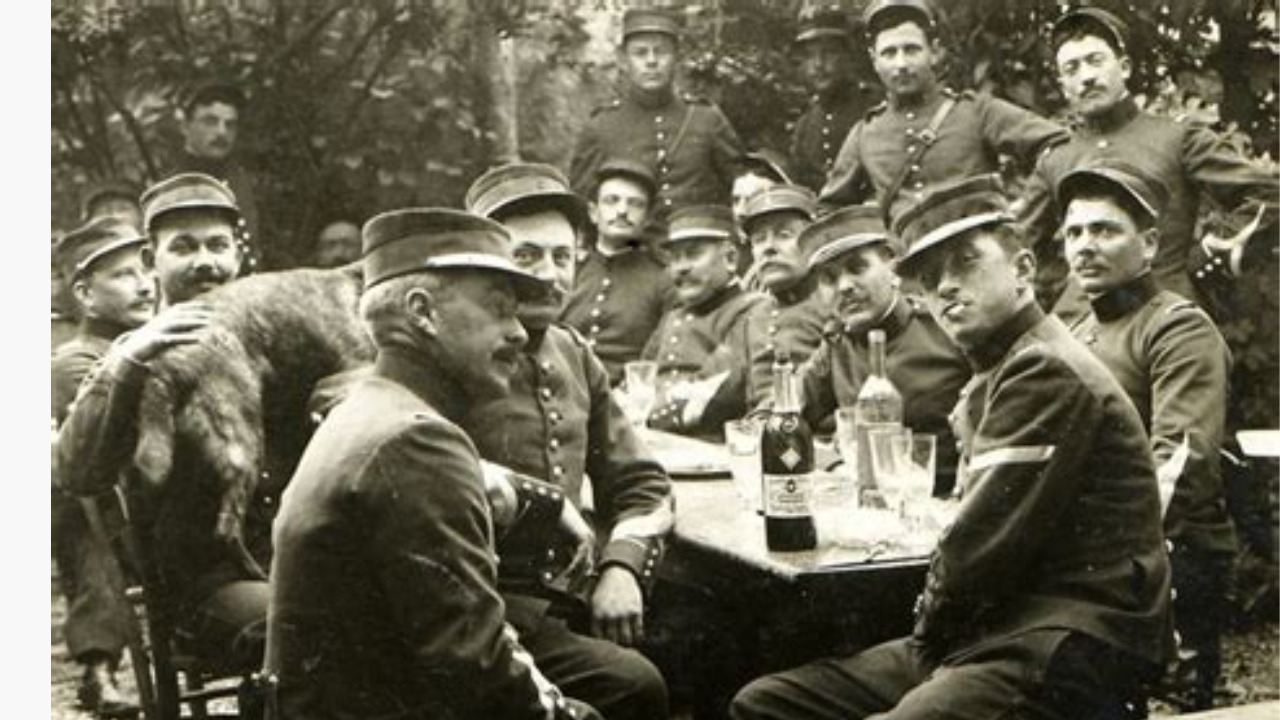Absinthe, a potent and mysterious green liquor with a rich history, has long been associated with the military. Known for its high alcohol content and the legendary “green fairy,” absinthe holds a unique place in the annals of military lore. From its popularity among soldiers during the 19th and early 20th centuries to its connection with artists and writers, absinthe has left an indelible mark on military culture. In 1797 a French Major, named Dubied bought the recipe from the Henriod family who supposedly were the originators of absinthe. Some say the credit goes to a French doctor, named Pierre Ordinaire. Dubied went on to found a small distillery with his son Marcellin and son-in-law Henri-Louis Pernod. Pernod then went on and managed to convince the French military that a daily ration of absinthe should be given to every soldier, in order to rid bad water of disease-causing microbes. They were fortunate that wine shortages and the Algerian War (from 1830 on) happened, as this allowed them to make quick gains with the acceptance of this drink.
Absinthe was believed to have medicinal properties, particularly in combating diseases prevalent in military campaigns due to its high alcohol content and the presence of botanicals, such as wormwood, fennel, and anise. This led some to believe in its potential as a remedy for ailments like dysentery and malaria. Although the scientific validity of these claims was disputed, the perception of absinthe as a medicinal aid became ingrained in military culture. Studies now show that wormwood, one of the ingredients used in making absinthe, is an effective suppressant of malaria.
During periods of conflict, soldiers often sought moments of respite from the harsh realities of war. Absinthe, with its reputation for inducing a hallucinogenic effect, became a popular choice among soldiers for temporary escape. It provided a way to momentarily forget the horrors of battle and find solace in the intoxicating embrace of the green elixir.

- Absinthe causes hallucinations and madness: Perhaps the most notorious myth surrounding absinthe is its alleged ability to induce hallucinations and madness. This myth can be traced back to the 19th century when absinthe gained popularity in bohemian circles. However, the psychoactive properties attributed to absinthe were actually a result of misinformation. The primary culprit was the compound thujone, found in wormwood, one of absinthe’s key ingredients. While thujone can cause mild effects in high doses, absinthe contains only trace amounts, making hallucinations and madness highly improbable. Researchers eventually determined that thujone only has adverse effects on performance and mood when consumed in high quantities — more than what one finds in a typical bottle of absinthe.
- Absinthe is a highly dangerous and toxic substance: Absinthe has long been associated with notions of danger and toxicity. However, these fears are largely unfounded. The concerns arose during the temperance movement of the early 20th century when absinthe was wrongly blamed for societal ills. In reality, absinthe’s alcohol content is the main cause for concern when consumed in excess, as with any other alcoholic beverage. When consumed responsibly, absinthe poses no more danger than other spirits.
- Absinthe was banned worldwide: Contrary to popular belief, absinthe was not banned worldwide. While it faced prohibition in several countries, such as France, the United States, and Switzerland, other countries never implemented a complete ban. In recent years, absinthe has experienced a resurgence in popularity, leading to the lifting of many bans and the creation of regulations ensuring safe production and distribution.
- Absinthe is a psychoactive drug: Another prevalent myth is that absinthe is a psychoactive drug. The truth is that absinthe is a distilled spirit with a high alcohol content, typically ranging from 45% to 74%. While the botanicals used in its production, including wormwood, may contribute to its distinct flavor profile, absinthe does not possess psychoactive properties beyond the effects of alcohol itself.
- All Absinthe turns cloudy and requires flame rituals: One of the most visually captivating aspects of absinthe is its unique louche, or clouding effect. When water is added to absinthe, the essential oils present in the drink precipitate out, causing the characteristic cloudiness. However, not all absinthes turn cloudy, as it depends on the specific recipe and production method. Additionally, the traditional flame ritual involving sugar cubes and fire was not commonly practiced during absinthe’s heyday, but rather gained popularity in recent times as a theatrical presentation.
*The views and opinions expressed on this website are solely those of the original authors and contributors. These views and opinions do not necessarily represent those of Spotter Up Magazine, the administrative staff, and/or any/all contributors to this site.

